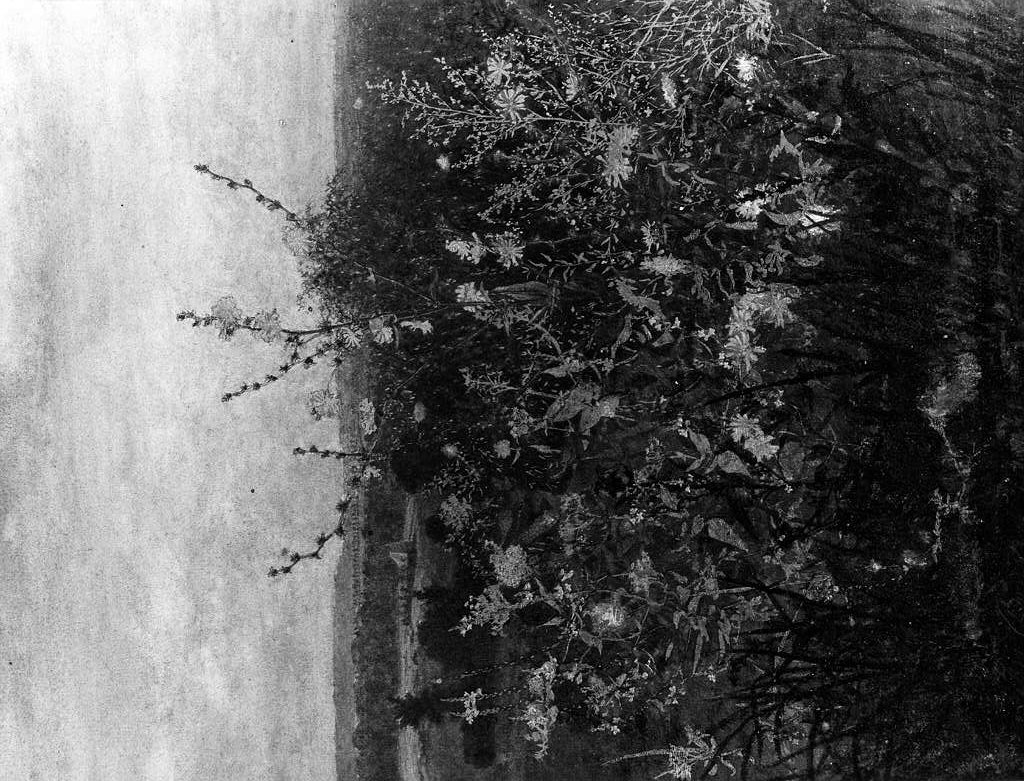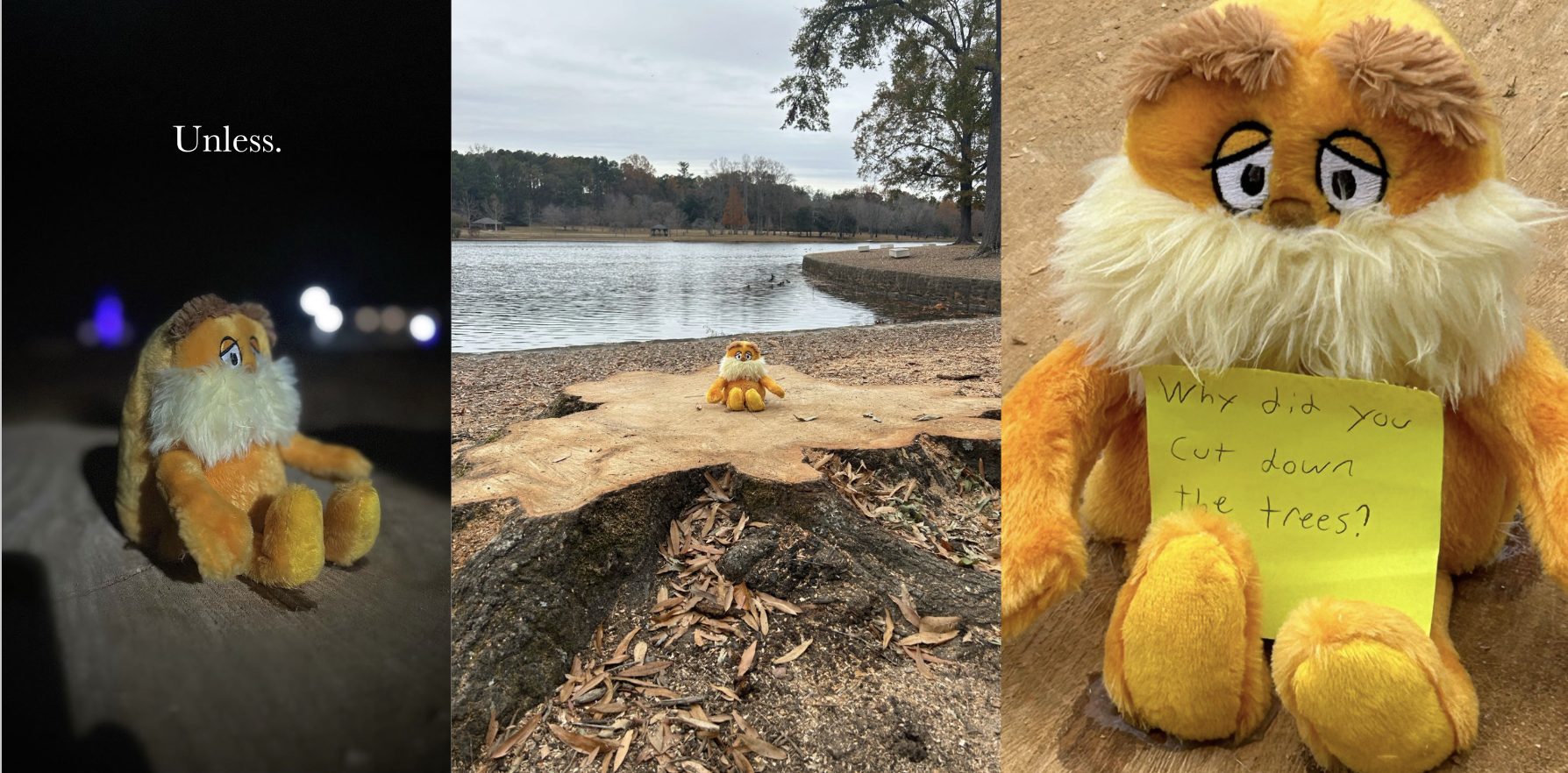On the night of November 16th, a post appeared on the anonymous social media platform, YikYak. Seated on top of a flattened tree stump was a plush Lorax, no bigger than a coffee mug. Later that day, a small note was added that read: “Why did you cut down the trees?”
As the Dr. Suess story goes, The Lorax, this furry orange creature appears one day after an ambitious businessman cuts down a single Truffula tree and serves as the ardent but ultimately helpless voice of resistance to the environmental destruction caused by capitalism. It doesn’t take textual analysis from an English major to identify the parallels between the Lorax’s situation and ours.
By my count, at least four trees have been removed entirely from the green space between the DH and the lake in the past year. Unofficially, I have heard safety cited as the primary reason for their removal. The oaks are nearing the end of their 75-year lifespan, posing a significant risk of falling on people or structures anytime there’s a major weather event.
It seems counterproductive to dispute the necessity of their removal; no tree is worth a human life, no matter how ecologically valuable. But it can’t be ignored that in the absence of these oaken behemoths, the green behind the DH will be dramatically altered space. Squirrels will be more reliant on patio leftovers for food, less shade will be available to picnic-goers, and what was a scenic plateau is now marred by strange patches of empty grass.
In the wake of their destruction, I was left wondering what could have been done differently, but it seems that the solution has been surrounding us the entire time. Rewilding is the practice of returning existing space maintained for human use back to nature. It is the belief that we should work with nature rather than try to control it.
We could begin by replanting native species of flora; according to the Ecological Landscape Alliance, in order to support a diversity of life, “native plant species must represent at least 70% of the biomass in the landscape.” otherwise, ecosystems collapse and food systems unravel. In fact, a model for this already exists on Furman’s campus, the garden surrounding the Shi Center for Sustainable Communities. It is arguably one of our most serene and picturesque locations, and given its frequent appearance in promotional materials, it’s advantageous for our recruiting efforts.
Rewilding our landscape isn’t abandoning our campus’s visual charm; it’s unleashing the natural beauty that was here before us. Underneath all the turf, pesticides, and sprinklers is a self-sustaining masterpiece waiting to be discovered. But, of course, what does this mean for the trees? Of course, trees have a natural life span and fall as they approach it. But when they do die, after trees fall, their trunks become home to salamanders, fungi, and new tree saplings. Of course, they would still have to be safely cut down by humans, but does this mean their biomass must be removed? Imagine a future where a log-cutting team is not a harbinger of destruction but new growth. This is a reality we know is possible because it already exists all around us.
Furman recently publicized a land acknowledgment plaque, recognizing that our campus lies on land stolen through conquest and murder. It seems that a genuine land acknowledgment could involve changing how we interact with our environment to reflect the practices of the Cherokee who came before us, living with the land instead of killing it. As students, we must turn to the wisdom of our childhood and that plush on the stump. After all:
“Unless someone like you cares a whole awful lot, nothing is going to get better. It’s not!” – The Lorax




